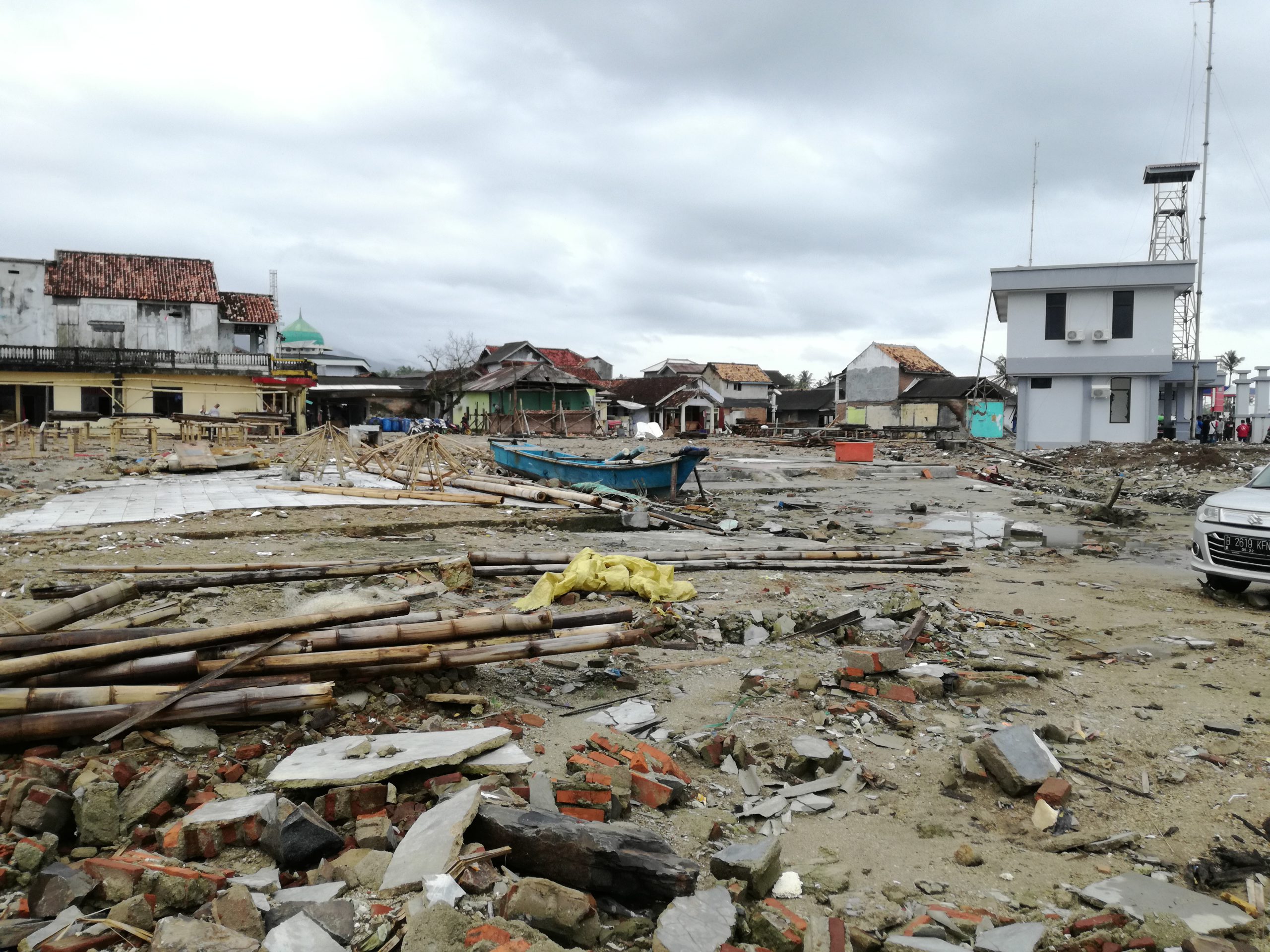In this disaster, a volcanic island in the Sunda Strait erupted, and the large amount of sediment from the collapsed mountain triggered a tsunami. The tsunami, which struck suddenly without the tremors and sounds like an earthquake, was called a “silent tsunami” by the locals. In Japan, an eruption of Mt. Bizan on the Shimabara Peninsula in Nagasaki Prefecture in 1792 triggered a tsunami that hit Amakusa in Kumamoto Prefecture on the opposite shore, killing about 1,500 people. This is known as the “Shimabara taihen, Higo meiwaku” in Japanese, which means Shimabara is in trouble and the situation in Higo is caused by that.
CODE visited the disaster affected areas in western Java in January 2019, guided by Maschahio and his colleagues from the Indonesian Institute of Architects, who were introduced to us by our counterpart, architect Eco Prawoto. In the affected areas, 100m inland from the coastline is a no-residence zone, and while some residents live in temporary housing on higher ground, there are many fishermen who continue to live along the coast. The key issue is how to compromise between protecting lives from tsunami and the livelihood of fishermen, and how to evacuate and save lives in the face of a silent tsunami like the one that hit this area.
These challenges are similar as Japan, which has historically experienced many tsunamis, including the 2011 Great East Japan Earthquake. Maschahio and his colleagues are exploring ways of disaster prevention and mitigation that do not destroy the ecosystem as much as possible, using the “eco-approach”. CODE has decided to create a forum for exchange between Japanese and Indonesian experts to learn from each other’s experiences, knowledge, and mistakes in disasters, and is continuing discussions with ECO and others.



-scaled.jpg)